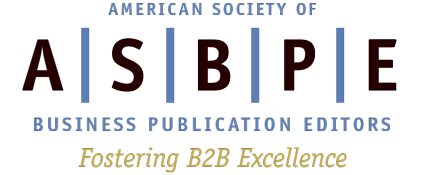By Mark Schlack
This month, ASBPE is focusing our ongoing ethics discussion on native advertising. It’s an interesting phrase — if you didn’t know better, you might think it’s an effort to advertise in many languages around the world.
No, the natives in this case are not natives of another country or culture. The natives are us, and the country is editorial. Native advertising is the latest spin on advertorials. Far be it from me to divine the intent of marketers, but as far as I can tell, they are trying to balance two competing goals: leveraging the credibility of independent, skeptical editorial and completely controlling the content so that they can portray their companies or clients as thought leaders (or at least interesting dudes).
So advertising agencies came to web publishers and asked them to publish columns by their clients as if they were normal content for the site. The columns (or news stories or however else they were presented) aren’t usually flogging products. They take a higher tone, talking about general trends and trying to position the advertiser’s executives or product managers as thoughtful people who understand the problems of the day.
Native advertising got a lot of buzz last year when Forbes.com started accepting it. In my opinion, if you look at Forbes’ implementation, they did a poor job in presenting this material to their readers. You’ll notice that other than some vague phrases at the top of the page and an odd byline treatment, this article is virtually indistinguishable from a staff-written article on the site. In other words, there is no clear separation of advertising and editorial.
The recently updated ASBPE ethics code addresses this explicitly.
Purely textual advertising, such as customer-provided content known as native advertising, should not be presented as editorial. The fonts and layout used should be distinct enough to set it apart. The content should be labeled as advertising.
Native advertising is probably here to stay until the next bright and shiny object captures the attention of advertising agencies. But it doesn’t have to be a betrayal of reader trust. Often, the advertising sales wing of your company is going to be very focused on the execution of these usually lucrative deals and not thinking much about the ethical implications. But as editors, we can and should get involved in that conversation. And we can influence the outcome.
In fact, we can be proactive about it. Ask your publisher what your site’s position is on native advertising. If you’re not comfortable doing that, ask your manager if they have had that talk. Remind them that ultimately, readers are going to become confused about who is saying what on your site and that all the years you have invested in becoming a trusted source are being put at risk. And that your readers can already read all of that vendor stuff on the vendor site anyway. Good publishers understand that it’s bad business to trade away your core value to readers.
Engage them in a conversation about the right way to do this. Sales people may believe that advertisers won’t budge on this, but they will. The New York Times now takes native advertising, but they do a much better job of leveling with their readers and they are successfully selling this more ethical version of native advertising.

The article is in a sans-serif font, in contrast to the standard Times Roman variant. A shaded background further sets it off. And to leave no doubt, the top and bottom of the page indicate that the post was paid for by the advertiser. Other measures separate the native advertising content in site nav and search and various other lists of stories to read.
Is it actually labeled “advertising?” No. It’s referred to as a “paid post.” Quibble if you will.
I don’t know how the Times came to a different policy than Forbes. I know how it happened at my company. The sales and edit sides had a conversation about how to respond to advertiser requests for this and came up with a format much closer to the Times than Forbes. Advertisers accepted it; after all, they’re counting on the integrity of the sites they place these ads on to give them the desired halo effect.
I’ve seen some “the apocalypse is nigh” responses to native advertising. Really? Very high-quality print books published these sorts of things as inserts for many years with all the appropriate safeguards. I may think the attention being paid to native advertising in the marketing world is faddish and silly, but as an editor, it’s our job to take these things seriously and steer them in a good direction. I may wish it never happened and that it will disappear tomorrow. But wishing won’t make it so.
I don’t doubt that at some publishing companies this issue becomes a confrontation, but you could be pleasantly surprised. Whether a conversation or confrontation, get involved. The future of your relationship to your reader depends on it.
ASBPE president Mark Schlack is a senior vice president in editorial at TechTarget. He’s on Google+ as Mark Schlack and can be reached by email here.

